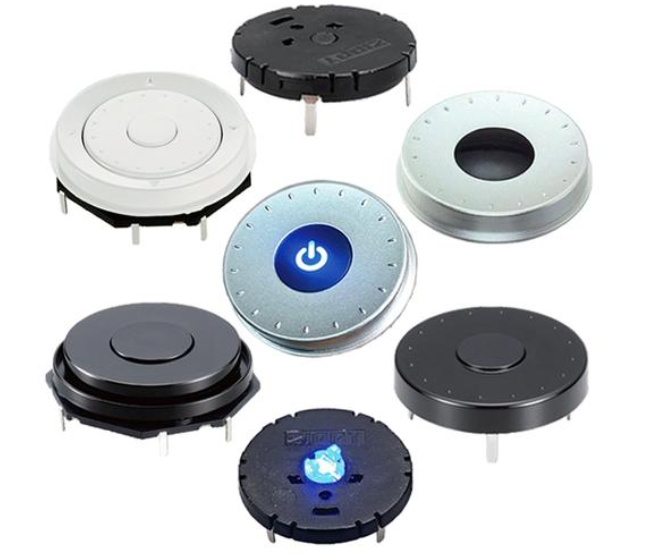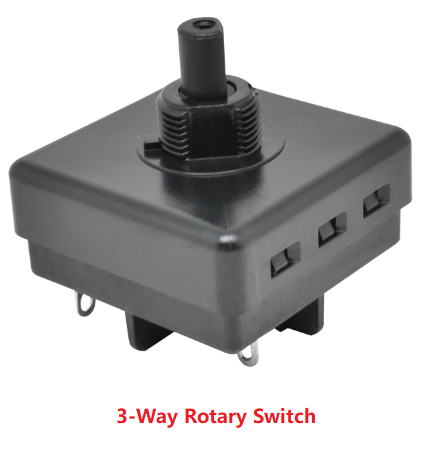
Are Rotary Swithces Analog?
Are Rotary Swithces Analog?
Are rotary swithces analog? Rotary switches can be either analog or digital, depending on the application. In many cases, rotary switches are used for analog purposes. For example, when used in volume control or adjusting brightness, the rotary switch creates a continuous, variable change in the circuit.
In analog mode, a rotary switch works by gradually changing the resistance or circuit path in a smooth manner, providing variable control. However, when used in digital devices, the rotary switch might be employed to select discrete options, such as changing channels or modes. Here, the switch would function more like a selector, triggering different states, similar to a digital input.

What Type of Switch is a Rotary Switch?
A rotary switch is a type of electrical switch that is operated by rotating a knob or handle. Unlike push-button switches, which are toggled with a press, rotary switches allow users to select different positions or options by rotating the knob in one direction. Each position on a rotary switch corresponds to a different circuit path, allowing you to change settings, like volume control on an amplifier or selecting channels on old radios.
These switches are often found in applications requiring multiple settings or positions. Common examples include volume control in audio devices, selecting different modes on machines, or even controlling lighting intensity. The design of rotary switches varies, but they typically feature a knob that turns smoothly through a series of set positions.
What is the Direction of a Rotary Switch?
The direction of a rotary switch depends on its design and the number of positions it has. Most rotary switches rotate clockwise (CW) or counterclockwise (CCW), with each direction cycling through different settings. Typically, the user turns the switch in one direction to cycle through options, and in some models, you can rotate it back and forth to navigate between settings.
The direction often corresponds to a logical sequence, such as increasing volume or selecting different modes. In more complex applications, the direction can be customized to fit the device’s purpose, with each click or stop corresponding to a particular selection.
How Does a Rotary Switch Work?
Rotary switches work by utilizing mechanical movement to create electrical connections. Inside the switch, a rotating element, usually a spindle or shaft, moves a set of electrical contacts or wipers. Each time the knob turns, the contacts move along a track and connect to different circuit paths.
As the switch rotates, it completes an electrical circuit for each position. This process allows users to select different functions or settings, such as adjusting a volume dial or selecting a different mode on a device. The rotary motion is typically smooth, and most rotary switches are designed to “click” into place at each position, giving the user tactile feedback that a change has occurred.

How to Test a Rotary Switch with a Multimeter?
Testing a rotary switch with a multimeter is straightforward. Here’s a step-by-step guide:
1. Set the Multimeter to Continuity or Resistance Mode: Before testing, set your multimeter to continuity or resistance mode (Ω). This will allow you to check whether the circuit is open or closed at each position.
2. Test Each Position: Start by probing the terminals of the rotary switch while it’s in the “off” or starting position. You should see no continuity between the terminals, indicating an open circuit.
3. Rotate the Switch: Slowly rotate the switch through each position. At each stop, check for continuity between the terminals. The multimeter should beep or show a resistance value, indicating that the circuit is now closed at that position.
4. Check for Consistency: Ensure that each position on the switch completes a different circuit. If the multimeter shows continuity in more than one position at once, it might indicate a faulty switch.
By following these steps, you can quickly test a rotary switch to ensure it is working as expected.
What is the Advantage of Rotary Switches?
- Easy operation: Rotary switch through the rotation of the way to open and close the circuit. This mode is more in line with human control habits, it does not need special strength, will not wear to the fingers, especially suitable for elderly and children uses.
- Long life and high reliability: The rotary switch has a simple mechanical structure and no contact with shrapnel and carbon brush and other easily worn parts, so the service life is long. In addition, the rotary switch adopts solid copper structure, small contact resistance, not easy to be broken down by current, will not flash when working, will not cause interference to other electrical equipment, with high reliability .
- Space-saving: Rotary switch design compact, can be easily installed in a variety of equipment, to provide users with more space to choose.
- Versatility: Rotary switch is widely used in various occasions, including the switch of household electrical appliances (such as lights, fans, heating, etc.), commercial occasions like parking lot lights, stairway lights, hotel lights, and the control of industrial equipment. In addition, the rotary switch can also be used to replace the traditional resistance potentiometer simulation function of the rotary pulse generator, widely used in the instrument front panel and video control board man-machine interface.
What Does 3-Way Rotary Switch Mean?
A “3-way” rotary switch refers to a switch that has three distinct positions. These positions allow users to select between three different settings or functions. It is commonly used in applications where three options need to be available, such as in some lighting circuits or multi-mode devices.
For example, a 3-way rotary switch in a lighting circuit may allow you to select between three levels of brightness. In other devices, it may provide options for switching between three different operational modes.
When selecting a rotary switch for your project, consider the number of positions needed, the type of feedback desired, and the ease of use. Whether it’s for an industrial machine or a home appliance, a rotary switch can offer long-lasting performance and smooth operation.

How to Adjust a Rotary Switch?
Adjusting a rotary switch is typically a simple process. Most rotary switches allow users to rotate the knob to set the desired position. Here are a few general guidelines:
1. Turning the Knob
Gently turn the knob in the desired direction to cycle through the positions. In some cases, the switch may have a locking mechanism, which will keep it in place once the desired setting is selected.
2. Fine-Tuning
If you need to adjust a rotary switch for finer control, slowly rotate the knob and listen for the distinct “clicks” at each position. This ensures that the setting is precisely where you want it.
3. Maintenance
If your rotary switch becomes difficult to adjust, check for dirt or debris in the mechanism. Cleaning the switch can often restore smooth operation. If the switch is old, you may need to lubricate it gently to maintain ease of movement.
Related Posts:
How to clean silicone rubber? Silicone Rubber Membrane Switch
How to clean silicone rubber? To clean the silicone rubber membrane switch, use a mild detergent and a soft cloth. First, turn off the power and remove the keycaps. Use a slightly damp soft cloth to gently wipe the switch and surrounding areas to remove dust and stains. If the stains are stubborn, wipe with ...

IP65 vs IP67: What Are the Differences?
IP65 vs IP67? The IP65 protection level provides complete dust protection for the device and can withstand low-pressure water jets from all directions, making it suitable for ordinary outdoor environments. Based on this, IP67 allows the device to be immersed in 1 meter of water for a short period of time (usually 30 minutes) without ...

Mechanical vs Non Mechanical Keyboard: What’s the Difference?
The main differences between mechanical keyboards and non-mechanical keyboards (such as membrane keyboards) are structure, feel, durability and sound. Each key of a mechanical keyboard has an independent switch, providing a clear feel and tactile feedback, strong durability, louder sound, and is suitable for gamers. Non-mechanical keyboard keys contact the circuit board through a rubber ...
Contact us online